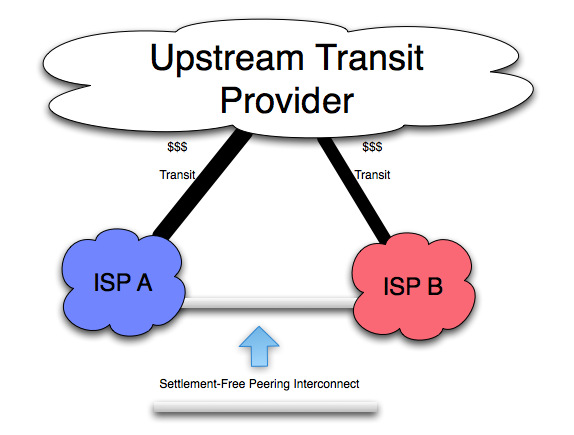1) Lower Transit Costs. Choices made by Internet Service Providers (ISP) are often dominated by telecommunications cost issues. Highest among these costs is Internet Transit service that provides the ISP with connectivity to the global Internet.
To reduce these transit costs, ISPs seek peering (zero or reduced cost paid peering) relationships with other ISPs. These peering relationships provide a more direct path for traffic and reduce the load on these expensive transit services. By contrast, the equivalent peering transport (interconnection circuit) is typically less expensive. This is shown pictorially in the figure below.

Figure 3 – Migrating traffic from Transit to Peering Interconnection
2) Lower Latency. As a side effect of interconnecting directly with peers, ISP customers experience lower latency to the other ISP’s customers. Traffic destined for a local competitor’s customers may need to traverse a couple of transit providers and potentially across great distances (with high latency) before reaching the other customer. We heard of circuitous paths for example between the United Arab Emirates and Saudi Arabia that traversed an overloaded exchange point (MAE-East) at the time located across the Atlantic Ocean in Washington DC. Through direct peering interconnections (using direct circuits or regional exchange points) ISP customers realize better performance.
3) Usage-based traffic billing. Some ISPs charge customers based upon metered traffic. Since packet loss and latency slows traffic consumption, they benefit from a lower latency, lower packet loss Internet. It is in their best interest therefore to assure that customers use as much bandwidth as possible by minimizing loss and latency through effective traffic engineering . This assertion was first shared with the author by Dave Rand, CTO of AboveNet but is a source of debate among peering coordinators.
4) Marketing Benefits. Some ISP pointed to the benefits of a network diagram rich in interconnections as a proxy for quality as seen by customer prospects.